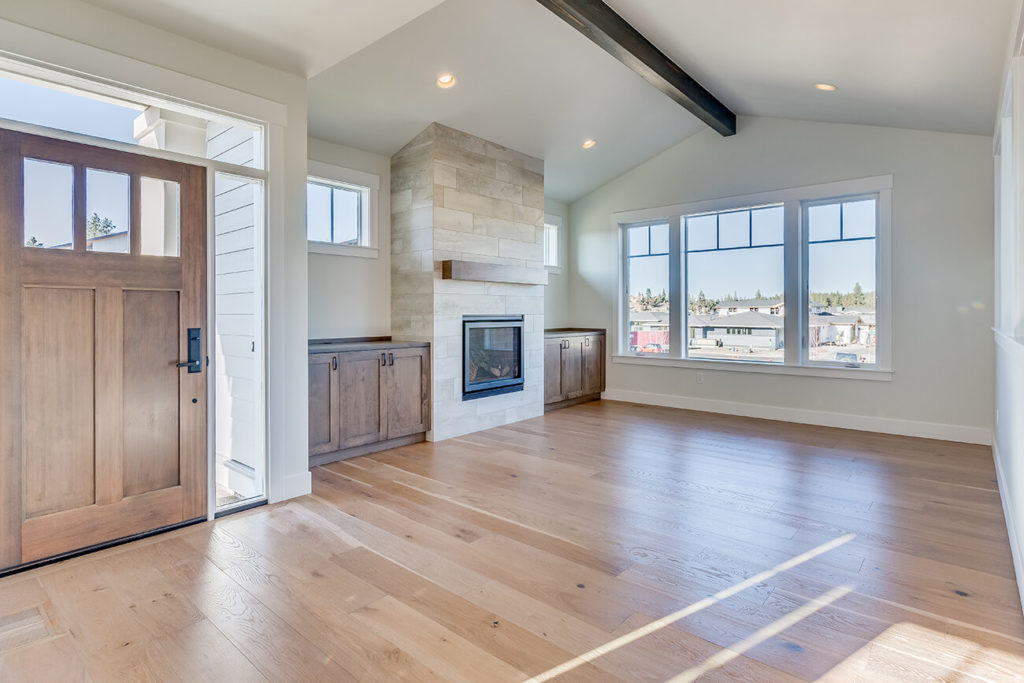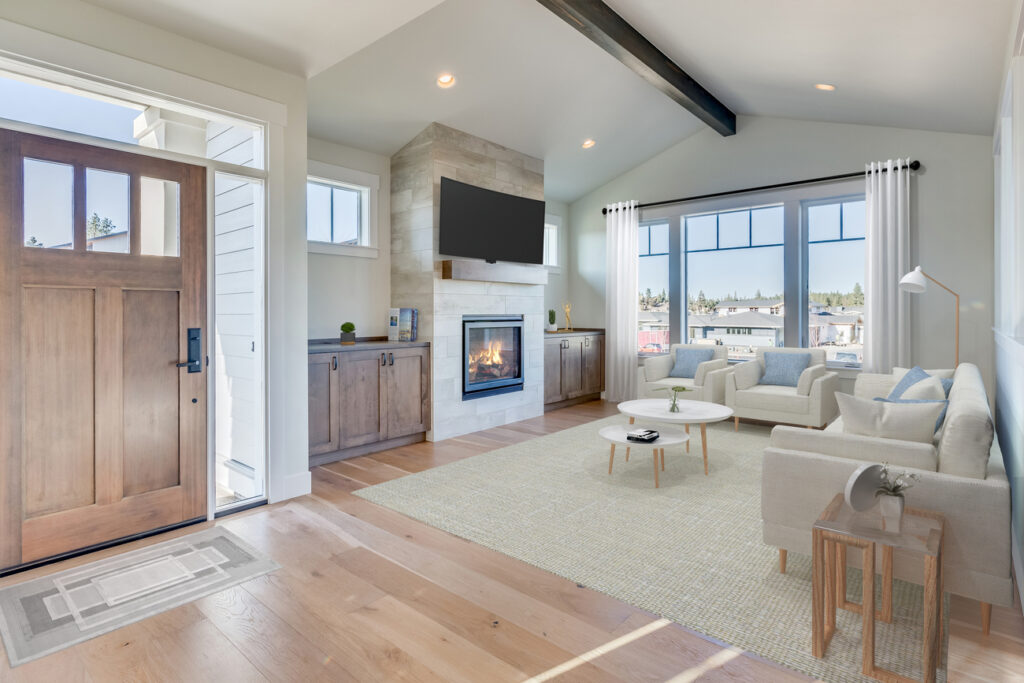Are you considering whether to use DIY (Do It Yourself) virtual staging software or hire a virtual staging provider?
Like so many things in our mobile-first world, when it comes to virtual staging, you can safely say ‘there’s an app for that.’
It’s the simplest thing in the world to go to the App Store on your mobile device, download one of many virtual staging apps and start virtually staging at a basic level.
But is that the best solution for you and your real estate needs?
In this post, we’ll show you what it takes to do your own DIY virtual staging and how it compares to using an online virtual staging provider.
Before we dive in, let’s take a look at what virtual staging is.
What Is Virtual Staging?
Virtual staging is simply the use of graphics software to add (and sometimes remove) items from an image.
That technique typically applies to real estate photography. And it consists of furniture, decor, and artwork that typically match a specific design style. For example, Modern, Scandinavian, or Farmhouse.

So yes, it’s possible to get started right away on your own, but that doesn’t mean you’re getting the best results.
Far from it, actually.
Sure, you’ll come up with something. But it’s not going to be the kind of real estate marketing image that can make someone stop and think: “I could see myself living there!”
In fact, that kind of work requires skilled digital artists using hi-end software packages with enough time and processing power to craft a digital masterpiece.
Unfortunately, that type of quality and attention to detail isn’t available on a consumer mobile app.
The Difference Between DIY Virtual Staging Apps and Virtual Staging Providers
There are many subtle, but quite profound differences in what you can achieve with DIY virtual staging apps vs virtual staging providers.
For starters, DIY virtual staging apps have had to give up performance and quality to focus on speed and usability.

Second, when it comes to providing a variety of furniture sets, artwork, decor, accessories, and furniture styles, there’s no question that a virtual staging service provider can offer a wider range.
And more importantly, a better quality product than a stand-alone app.
Furthermore, the skilled professionals doing the work for you have access to better lighting and color-correcting software. That way, the finished product looks more realistic to the everyday home buyer.
On the other hand, using an app gives you more control over the final product. This is obviously an advantage if you’re a visual person and need something done immediately.
With an app, you upload an image, select furniture, perform quick placement to transform an empty room into a real estate marketing image that you can quickly upload to your listing.
Sometimes that’s all you need. So, for quick, cheap, and easy virtual staging, an app may be your best bet.
But it’s far from the best quality.
My point is that creating high-quality virtual staging requires skill and processing power.
Fast & Affordable
Virtual Staging Service
Interiors. Landscapes. Commercial. Virtually transform any space.
Pros and Cons of DIY Virtual Staging Software vs a Virtual Staging Provider


Virtual Staging providers like PhotoUp have access to a large library of 3D virtual furniture, CAD (Computer-Aided Design) software experts, and photo retouching professionals.
They also have access to a backend system that makes it simple to upload your images, select furniture, and then go about your day.
Besides, you get to choose the look and feel of your room(s). As well as collaborate with experienced designers who will deliver high-quality virtually staged images in less than 24 hours.
In contrast to using a virtual staging provider, the main benefit of using a DIY virtual staging app on your mobile device is that you get instant results.
But be warned, these apps rarely work as effortlessly as you might imagine.
First of all, your choices are limited.
Second, functionality is often not up to par, meaning that your clients may not be happy with the final results.
Time vs Quality: Take Your Pick!
Except for quality, the main difference between the two systems is the amount of time you have to spend.
Even though you can get started quickly with a virtual staging app, it’s still going to take time to get a deliverable final product.
With a virtual staging service provider, you’ll simply upload an image, select the furniture, and then sit back and wait for the image to be delivered.
Overall, the cost of DIY vs having someone else do the work for you is likely worth the small amount of money you’d pay for using a virtual staging provider.
Best Virtual Staging Providers


If you don’t believe how much better results you get from a provider, we recommend checking it out for yourself.
Best of all, there’s no commitment.
And most services will give you a free trial, where you can test drive their service, make suggestions and get a sense of how quickly they can deliver.
For instance, companies like Roomy, BoxBrownie, and 3D Stagers are all doing beautiful work with quick turnaround times.
Additionally, we strongly suggest checking out PhotoUp for a modern, high quality, and simple virtual staging experience.
Our teams of artists and editors are on stand-by right now, ready to show you what they can do.
So, what are you waiting for?
Get started with PhotoUp today, and receive 10 free credits to test out our service.
Fast & Affordable
Virtual Staging Service
Interiors. Landscapes. Commercial. Virtually transform any space.
Conclusion
Digital marketing and the onset of the COVID-19 pandemic have made a profound transformation in the real estate industry.
Typically, digital marketing for real estate has become mainstream and expected on every listing.
Processes like home staging that once took hours and cost thousands of dollars can now be replicated online quickly and at an affordable price.
It’s transformed the way that almost every single real estate transaction begins, which is online.
It’s up to you whether you choose to go it alone with a virtual staging app, or if you take a more long-term, high-quality, growth-oriented approach with a virtual staging service provider.
In the end, the choice is yours, so choose wisely.
That’s all for today!
We hoped this post helped you decide whether to use a DIY virtual staging app or a virtual staging provider.
Before you go, you may also want to check out the following resources:






